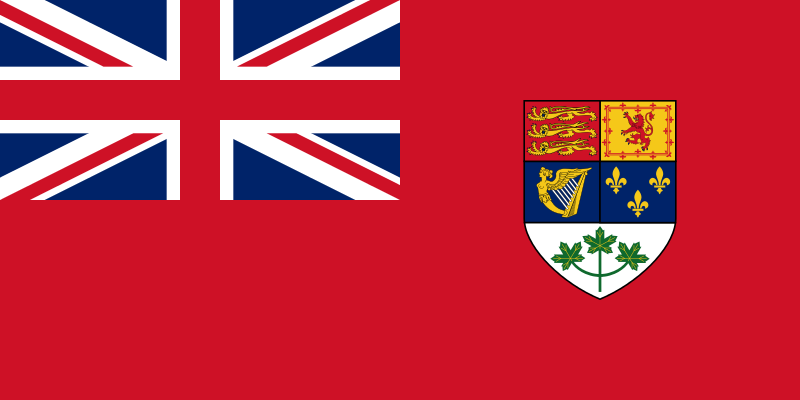In the fall of 1929, Canada’s Minister of Justice, Ernest Lapointe, travelled to England. He took with him Dr. Oscar Skelton — the “elder statesman” of the Canadian civil service, as William Lyon Mackenzie King once described him. When Lapointe and Skelton were done their negotiations, they had confirmed that Canada would have its independence from the British Empire.

It was a long time coming. In 1867, Confederation had made Ontario, Quebec,
Nova Scotia and New Brunswick into a single self-governing Dominion.
However, Canada remained a British colony with firm ties and obligations to the Mother Country. For example, Canada was automatically committed to the First World War in 1914. Canadian soldiers fought bravely and brilliantly; yet everywhere they turned, they realized that Britain was in the way. Theirs was a nation that was not yet a nation.
Canada began to demand more freedom and international recognition. Prime Minister Robert Borden’s wartime government insisted that Canada sign the Treaty of Versailles and have its own seat in the new League of Nations. After Liberal leader William Lyon Mackenzie King took power in 1921, he signed treaties, such as the Halibut Treaty, without a British co-signature. He also refused to go along automatically with the empire’s foreign and defence policies. In 1922, for example, he refused to help British occupation forces in Turkey without first gaining the approval of Parliament. (See Chanak Affair.)

King brought Dr. Oscar Skelton from Queen’s University to head the Department of External
Affairs. Skelton took the position in 1925. His mandate was to build independent Canadian expertise in world affairs, along with a foreign service populated by the best and the brightest. (See also Diplomatic and Consular Representations.) Skelton pushed the King agenda harder than King
himself. He found a powerful ally in Ernest Lapointe, the Prime Minister’s Quebec lieutenant and closest political confidant.
When Lapointe and Skelton arrived in London in 1929 for the Conference on the Operation of Dominion Legislation and Merchant Shipping, there was still much to do to achieve independence. (See also Colonial and Imperial Conferences.) There were various British laws that applied to Canada and could not be changed by Canada. And Britain’s Parliament could still, after all these years, override Canadian legislation.
The conference was convened to examine the empire’s legal structure and to make recommendations for improvements. The British hosted contingents from Canada, South Africa, Australia, New Zealand and the Irish Free State with sweet promises and dire warnings.

The conference opened in the Moses Room at the House of Lords, with its huge mural depicting the biblical handing down of the Tables of the Law. It was an impressive atmosphere to be in for the first five minutes, Skelton wrote to the Prime Minister.
But winter was coming and the heating dated “from the time of King Alfred, minus the fireplace that is sometimes associated with his name.”
Two months of difficult discussions ensued. At different stages, right up to the final day, it seemed entirely possible that the conference would fall apart. The British identified Skelton as the villain-in-chief; his own candidate for that title was the South African head of delegation, whom he considered “about the most obstinate Dutchman in history.”
Skelton had been given wide latitude for bargaining. The meetings pivoted around him and Sir Maurice Gwyer, the ablest of the British government’s legal minds. They served together on the conference’s key committee. They drafted much of the final report and built the coalitions that made consensus possible. Skelton got tough from time to time but compromised to make a settlement possible. He knew that the British were needed to pass the legislation “granting what we want.”

In the end, the conference recommended the passage of an act by the British Parliament. The act would eliminate Britain’s authority to make laws for Canada and other Commonwealth
Dominions, except in certain areas (such as Canada’s constitution) agreed upon by both countries.
The British tried to resist for a while longer, but the findings from the 1929 conference had weight and momentum and therefore inevitability. Two years later, on 11 December 1931, royal assent was given to the Statute of Westminster. It ensured that most decisions about Canada’s future would now be Canada’s alone.
The Statute was enacted in Britain, not Canada. It was a brief, dry lawyer’s document, with no rhetorical flourishes or promises of great things to come. But it was Canada’s declaration of independence.
See also: Constitution of Canada; Constitutional History; Constitutional Law; Constitution Act, 1867; Constitution Act, 1982; Patriation of the Constitution.

 Share on Facebook
Share on Facebook Share on X
Share on X Share by Email
Share by Email Share on Google Classroom
Share on Google Classroom